Year 3 Adding To Three or More Digit Numbers Worksheets
Add and subtract numbers mentally (A)
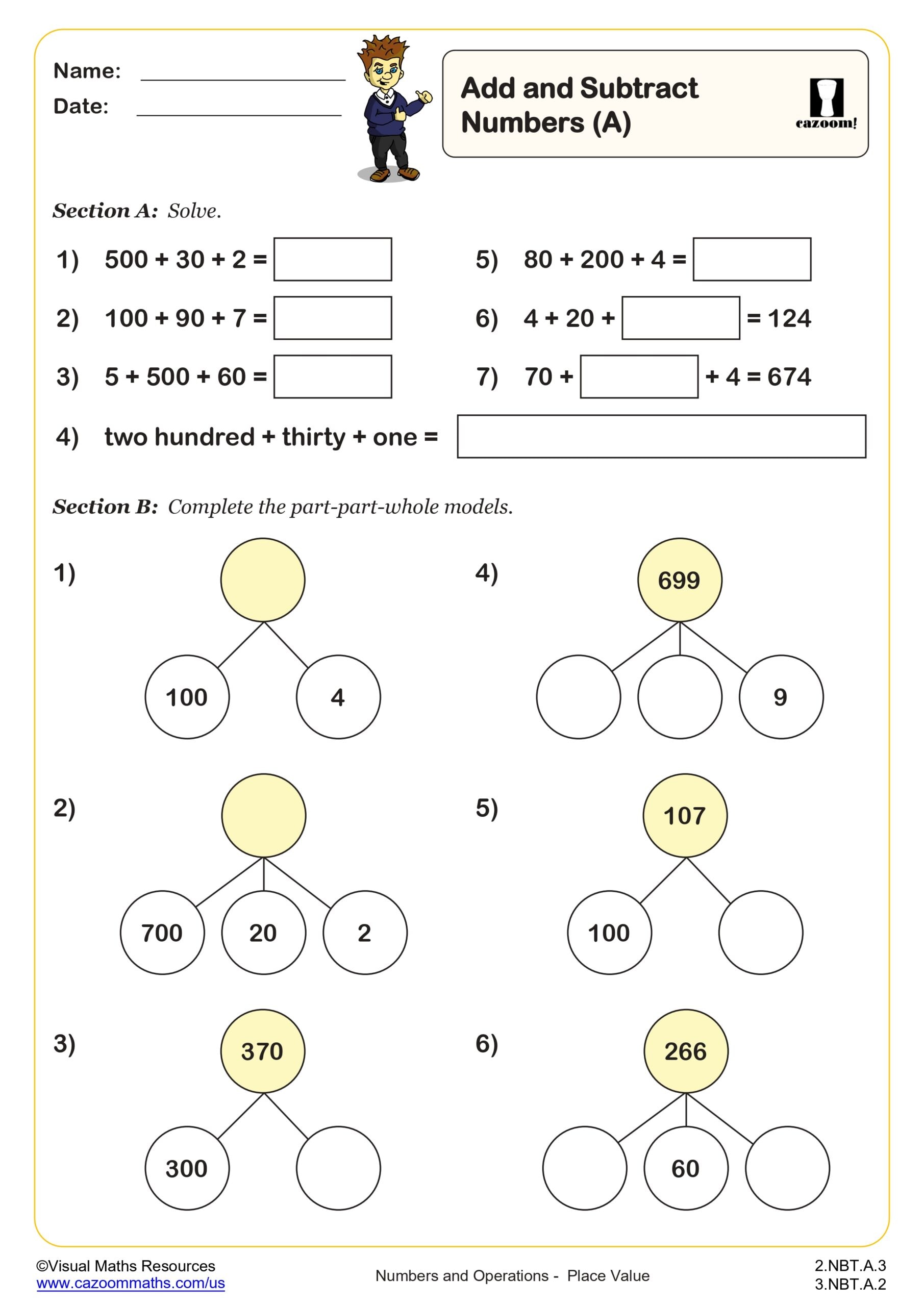
Addition grids (adding hundreds to a 3 digit number)
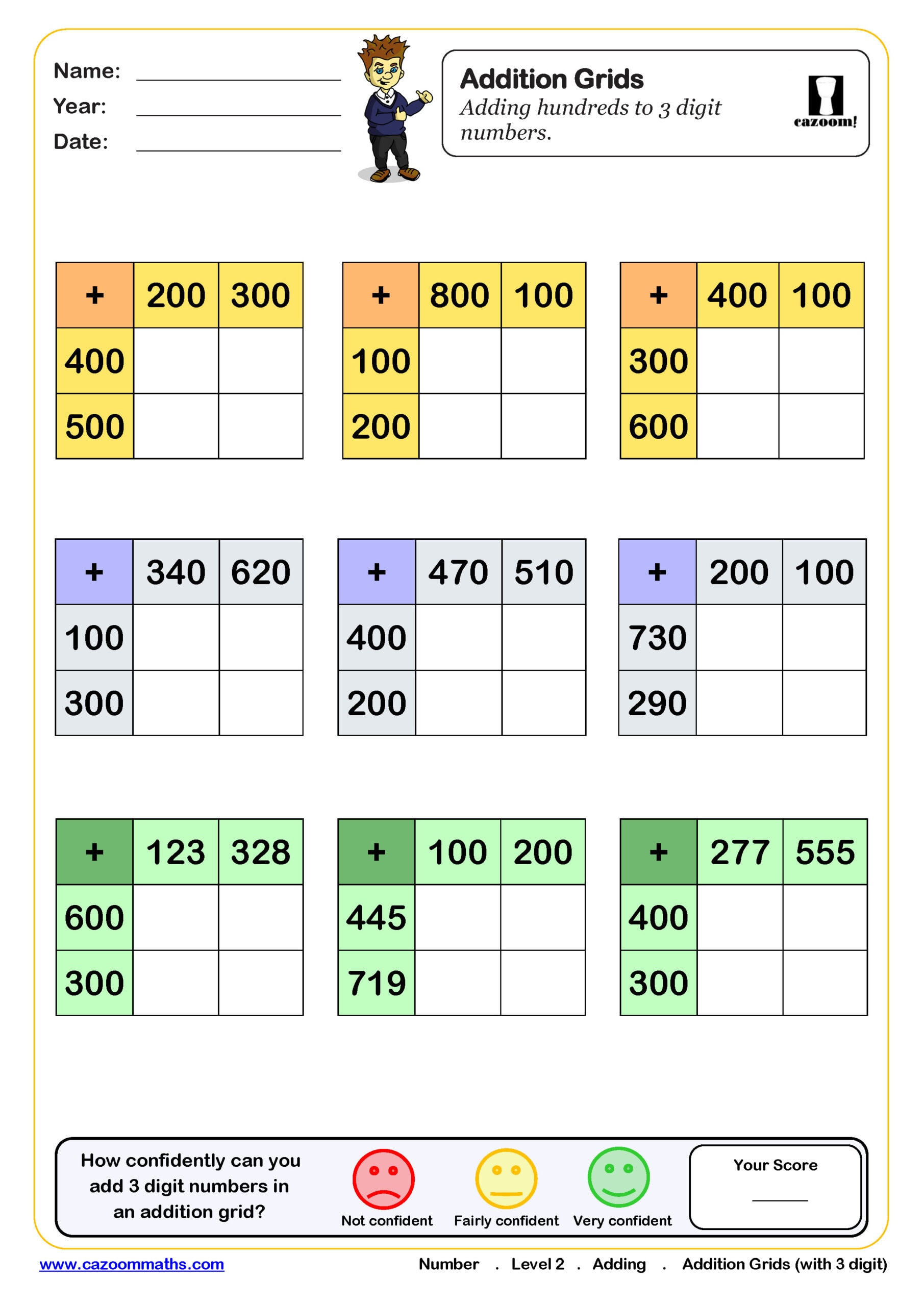
Addition grids (adding ones to a 3 digit number)
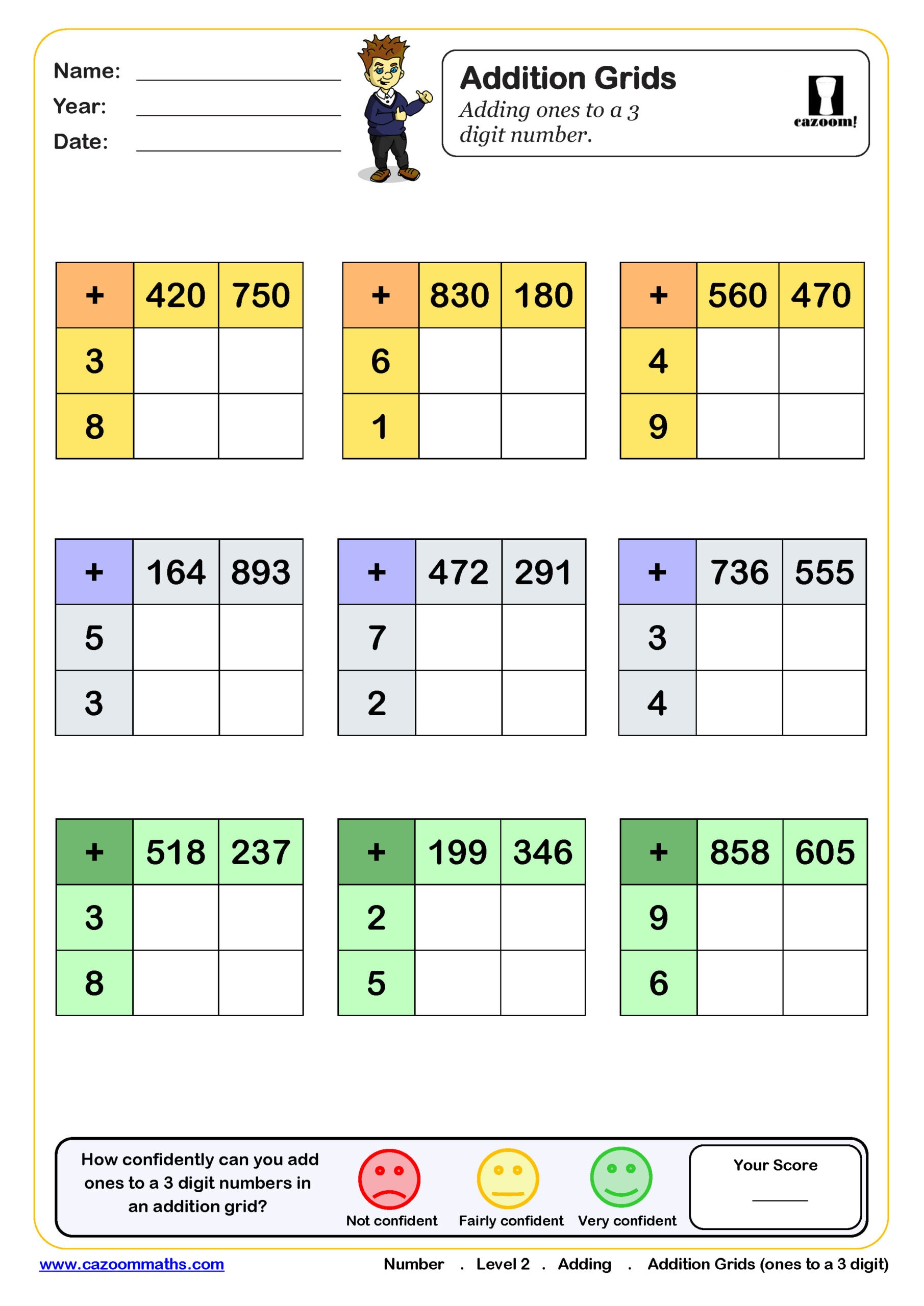
Addition grids (adding ones, tens and hundreds to 3 digit numbers)
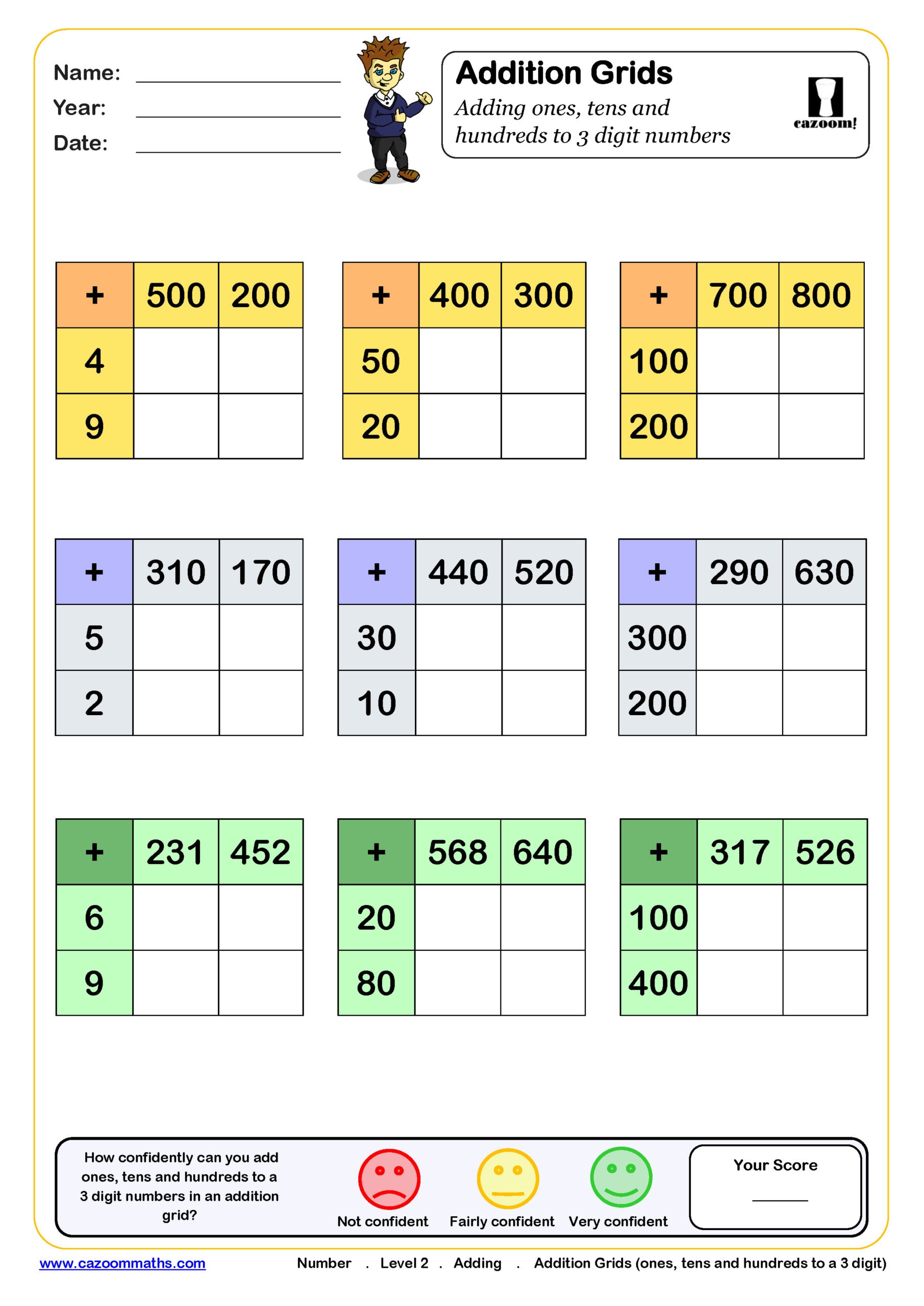
Addition grids (adding tens to 3 digit numbers)
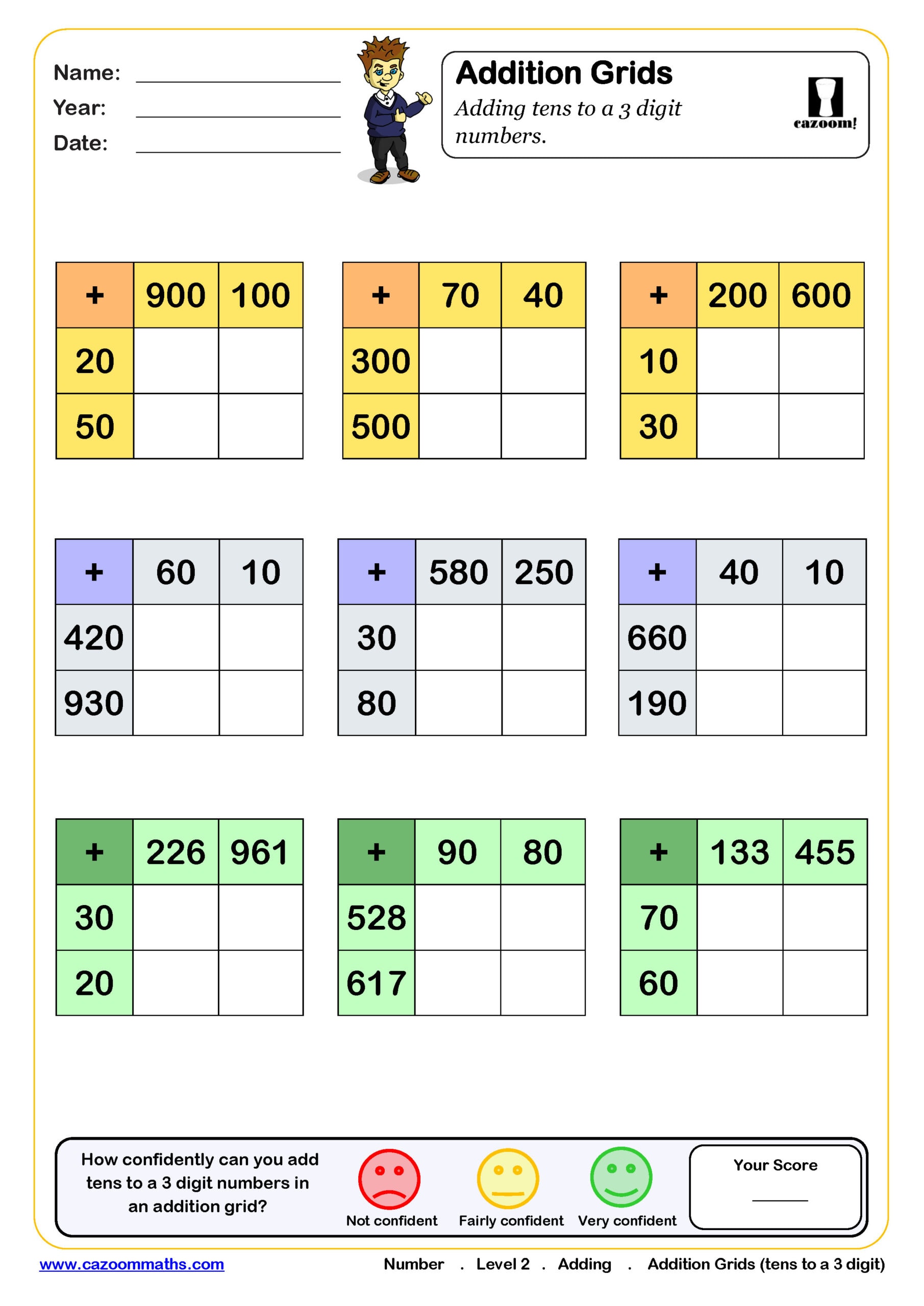
Addition Wheels (adding hundreds to 3 digit numbers)
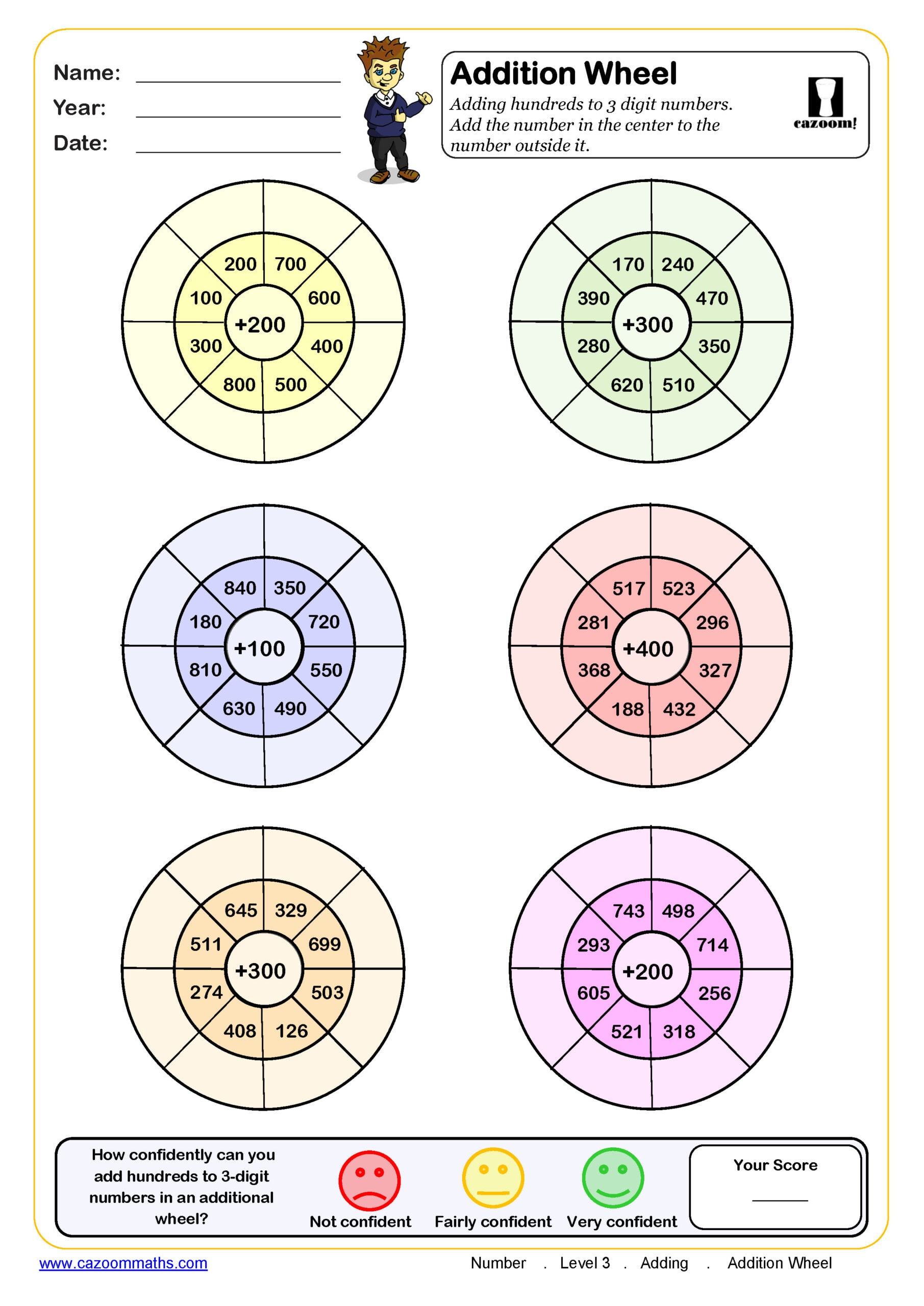
Addition Wheels (adding ones to 3 digit numbers)
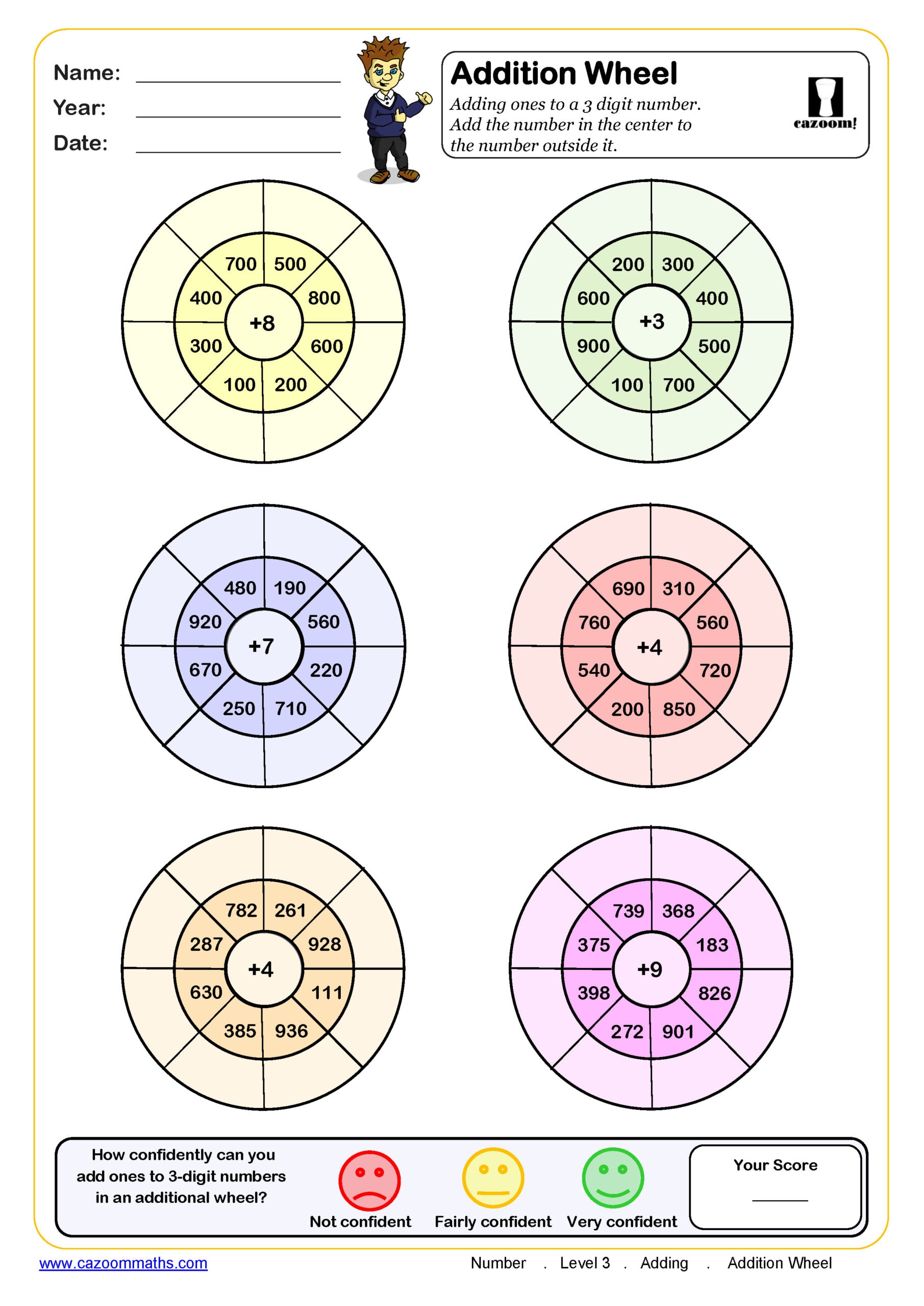
Addition Wheels (adding ones, tens and hundreds to 3 digit numbers)
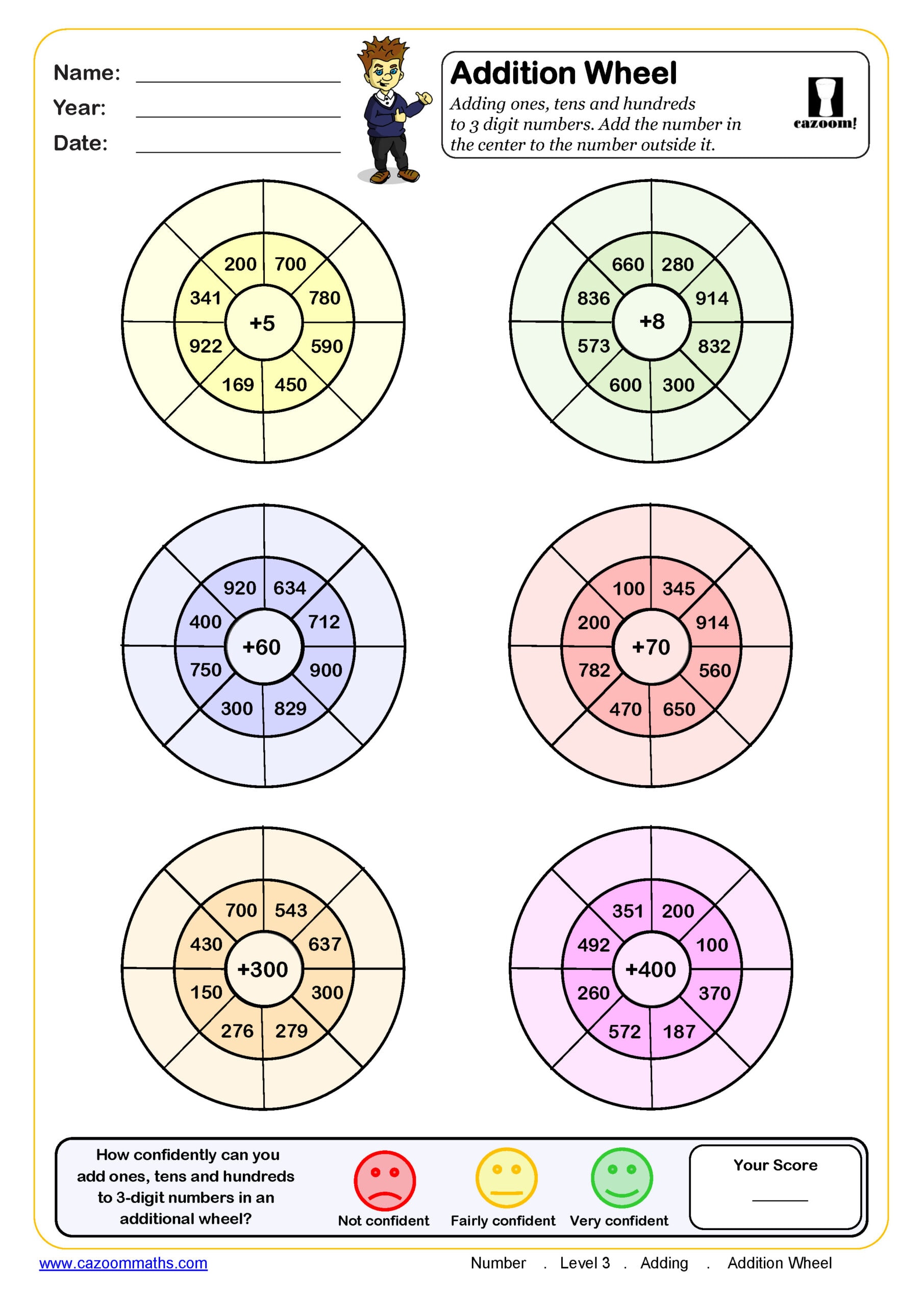
Addition Wheels (adding tens to 3 digit numbers)
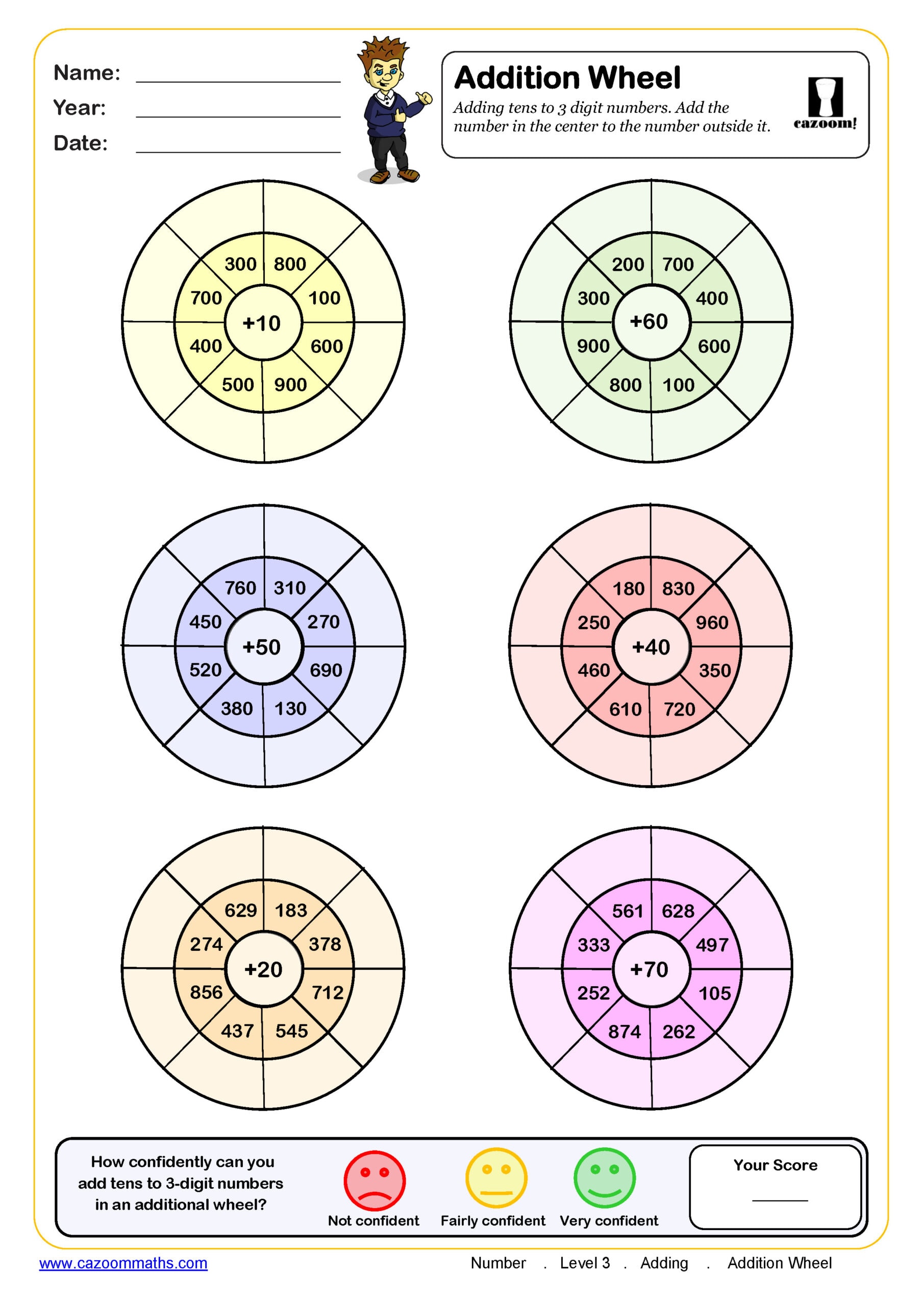
Complete 3-Digit Addition Worksheet Collection with Detailed Answer Keys
These KS2 adding to three or more digit numbers worksheets tackle the challenge of building solid computational skills head-on, offering carefully structured activities that progress from simple three-digit addition without regrouping to more complex problems involving carrying across multiple columns. Each worksheet includes detailed solutions that show the complete working process, making them perfect for supporting both independent learning and guided practice sessions. All of our maths resources are created in ready-to-use, printable PDF formats and include separate answer sheets for quick and easy marking.
How These Three-Digit Addition Worksheets Build Mathematical Confidence
Adding to three or more digit numbers in Year 3 maths means students learn to calculate sums involving numbers like 245 + 367 or 156 + 289 + 134, building on their understanding of place value to work with hundreds, tens, and units systematically. It's essentially where students make that exciting leap from simple two-digit calculations to more complex problems that require carrying (regrouping) across columns, which forms the foundation for all future mathematical work involving larger numbers.
We have designed these three-digit addition with regrouping worksheets around a carefully structured progression that really works in classrooms. Starting with addition without regrouping, students gradually tackle more challenging problems involving carrying numbers across columns. The layout supports visual learners particularly well, and we have found that students actually look forward to their next worksheet (which honestly surprised us at first!).
The Learning Benefits of Structured 3-Digit Addition Practice
Teaching experience shows us that students who engage with regular, well-designed 3-digit addition worksheets demonstrate measurably better performance in both formal assessments and everyday mathematical thinking. These adding 3-digit numbers worksheets align perfectly with National Curriculum expectations whilst building the computational fluency that students need for success in subsequent year groups and their eventual SATs assessments.
• Strengthens number sense and understanding of place value relationships across hundreds, tens, and units
• Develops calculation strategies that students can apply confidently across different mathematical contexts
• Builds exam confidence through exposure to SAT-style question formats and assessment expectations
• Creates independent learners who can work through multi-step problems systematically and accurately
• Supports differentiated teaching with varying levels of complexity available for different ability groups
Where Students Actually Use Adding 3-Digit Numbers Beyond the Classroom
Students frequently question the relevance of mathematical skills, but three-digit addition connects to countless real situations they encounter regularly. From budgeting pocket money to measuring ingredients for cooking projects, these computational skills prove invaluable across multiple subjects and life contexts. We have noticed students become genuinely excited when they recognise these mathematical connections in their own everyday experiences.
• Budgeting activities - calculating total costs for school trips, equipment, or saving goals
• Measurement projects - combining lengths, weights, and volumes in practical science tasks
• Data handling - totalling survey results and interpreting statistical information accurately
• Technology projects - calculating pixels, memory requirements, and digital measurements
• Sports analysis - adding scores, times, distances, and performance statistics
• Environmental studies - combining carbon footprints and conservation measurement data